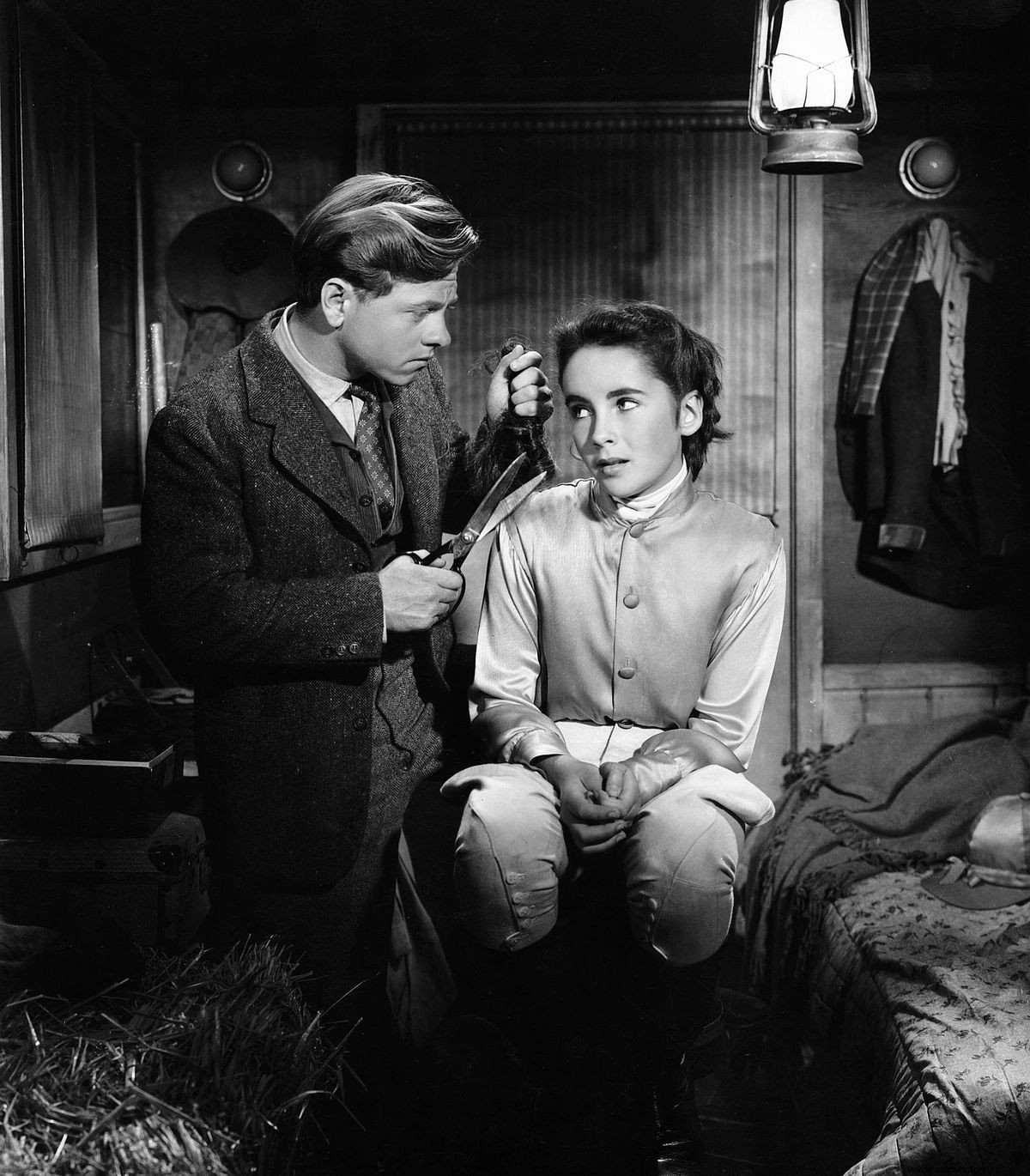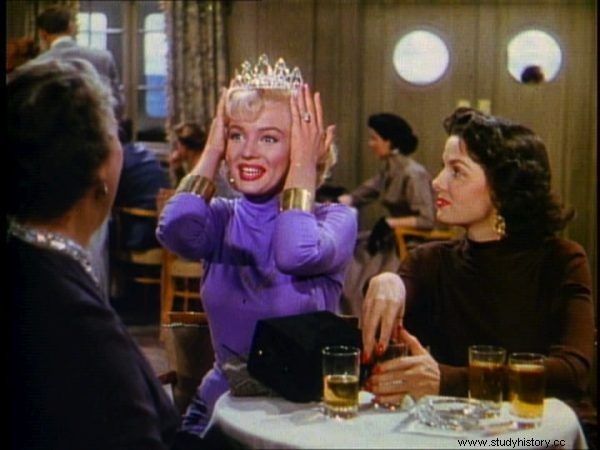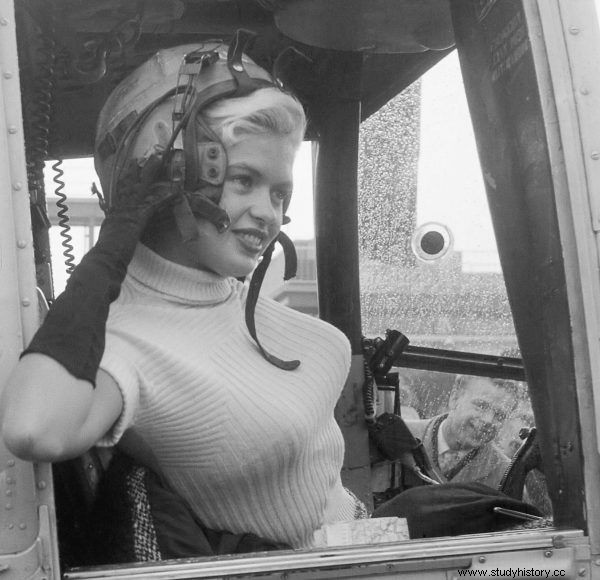Great success in professional life, and in private life:a series of failures. In the case of many celebrities, fame does not only mean high-profile roles, high salaries and adoration of fans around the world. What did the legends of cinema have to contend with?
Carrie Fisher can be called the actress of one movie. After the cult role of Princess Leia from "Star Wars", which she played when she was less than 20 years old, she was more of a second plan actress. Professionally she was also writing scripts and books. In later years, millions of people around the world admired its openness. She was even called an advocate for people struggling with mental disorders. The star spoke boldly and honestly about her private life, marked by bipolar disorder, depression and drug addiction.
Fisher did not shy away from controversial confessions. For example, she claimed that her starring in "Star Wars" and the great fame she gained from her role as Leah had a negative impact on her life. “I'm Leia, I can live in a tree house and no one can take it from me. I couldn't believe that a day would come when I wanted someone to take it from me, ”we read in Fisher's latest book, " The Princess's Diary " which appeared shortly before her death. And there were more people like her in the film industry.
1. Driving on the mental health reserve
In hindsight, it can be judged that Carrie's fame did more harm than help. Of course, you can imagine the excitement that a young student at a theater school in London felt when she found out that she had won a Hollywood casting for a science fiction film. She was supposed to play the role of an intergalactic princess and play alongside Harrison Ford, the rising star. And when low-cost production was a great box office success, it seemed as if the world was open to it.

Carrie Fisher in a role that unexpectedly changed - and destroyed - her life. The photo is from the book "The Princess Diary".
No one expected success on such a scale, and least of all, Fisher was prepared for fame, fortune and adoration of fans. The young actress was already taking drugs. Over time, the addiction worsened and the wealth diminished (apparently due to mismanagement by the manager). Meanwhile, there were still no movie proposals tailored to "Star Wars". As a result, Fisher's mental state deteriorated from year to year. Her fight against depression and addiction continued for many years. She described the worst moments in her books, including "The Princess's Diary" :
I'm in the reserve of physical and mental health. I carefully select and stockpile all the ingredients for my ruin recipe. Homemade hysteria. Right out of my head, ready to serve. Torment to go. Never again should I get myself into a situation that makes me feel so mean.
Carrie admitted taking drugs to "put the monster to sleep". She described depression as "concrete in the head." To get rid of this burden, she even opted for electroconvulsive therapy. After all, forty years after the premiere of the first Star Wars film, it seemed like she had managed to get out of the way. Unfortunately, the actress suffered a heart attack in the last days of 2016 and died in the hospital without regaining consciousness.
2. Cleopatra in rehab
Carrie Fisher's life was intertwined with the life of another star, whose fame caused more worry than happiness. Carrie's father left her and her mother - Debbie Reynolds - to be associated with the icon of cinema, considered the most beautiful woman in the world - Elizabeth Taylor.
The legendary performer of the role of Cleopatra seemingly had everything - beauty, fame, talent and fortune. For most of her life, however, she struggled with depression, alcohol addiction and nervous breakdowns. More than her multi-talented roles (including two Oscar winners!) Have been written about her love affairs, consecutive marriages and betrayals.
The first problems appeared at the beginning of Elizabeth's career. She started playing very early. She gained fame as a teenager when she played the role of a horse lover in the "Grand Prize". Unfortunately, an accident happened while filming. The actress fell off her horse and suffered a serious spine injury. He had been teasing her all her life. It was then that she also became addicted to painkillers.

Due to her role in the movie "The Big Leap", young Elisabeth Taylor not only became famous, but also began her path towards addiction to painkillers. Still from the movie - Mickey Rooney is standing next to Taylor.
In later years, Taylor began to drink the glass frequently. Her media marriage to the star Richard Burton undoubtedly contributed to this. At this stage, her greatest professional successes in the 1950s and 1960s were already behind her. Admittedly, she still made headlines, but mainly as a heroine of scandals and an alcoholic. Much has been written about her health problems. At the end of her life, she was in a wheelchair. She died at the age of 79.
3. Sex bomb depression
Marilyn Monroe will be remembered forever as a sex symbol. The beautiful and talented actress usually played the roles of infantile and naive suitors. Norma Jeane Mortenson, because that was her real name and surname, also consistently played the role of a fagot in public life.
In fact, she struggled with a lot of problems. She was depressed, lonely, and addicted to drugs. She also did not take her fame well. While it was associated with fan love, it also meant high demands from the media and film producers that Marilyn could not stand up to.

Monroe invariably played sweet bumblers in front of the audience, but her private life was filled with problems. Still from the movie "Men Prefer Blondes" from 1953.
Monroe was a product of the Hollywood machine - profitable and ruthlessly exploited. Behind the facade of a smiling blonde with a sensual gaze, created by the directors, there was a lost, feeling hungry woman who could not cope with her emotions. She was desperately seeking help.
She reached for alcohol, tranquilizers, visited doctors and psychoanalysts. She also threw herself into the arms of other lovers. All for nothing. One of her husbands, the writer Arthur Miller, argued that she was just unpredictable at times. Sometimes she even made him embarrassed.
Despite her deteriorating mental state, Marilyn tried to play the role of the movie star of all time for the whole world. She was assisted by amphetamines, alcohol and sleeping pills. At the age of 34, at the peak of popularity, she was treated in a psychiatric hospital. After the end of therapy, she returned to work, but she could no longer function without strong psychotropic drugs. She died 36 years after overdosing on sleeping pills.
4. The blonde with the highest IQ in Hollywood
Jayne Mansfield dreamed of joining the group of Hollywood stars. And she had the conditions for it to happen - extraordinary intelligence, and that was her large breasts and lush blonde curls. No wonder she managed to realize her ambitions. The camera loved her, as did the photojournalists and the audience. In the 1950s, her career gained momentum. Mansfield shot film after film.
Unfortunately, her private life was not as successful. In search of true love, the movie's sex bomb got involved in successive unsuccessful romances and marriages. She has been married three times, and her list of lovers is still impressive today. They included John Kennedy and Clint Eastwood, among others.

Beautiful, intelligent and… very unhappy. Jayne Mansfield leaves Rotterdam by helicopter in 1957.
All of her relationships, however, were short-lived, and Mansfield did not do well with loneliness. She looked into the glass more and more. Admittedly, money and the status of a movie star did not make her search for happiness easier. On the contrary, Jayne attracted men who took advantage of her professional position. Perhaps she needed more time to find the love of her life? Unfortunately, this is exactly what she lacked. She died in a car accident at the age of 34.
5. The first Polish movie star
Elżbieta Czyżewska was actually the first Polish superstar. Previously, no actress gained such great popularity in our country. The 1960s were hers. She played with Wajda, Barea, and Kutz. Her role in the Dramatic Theater in the play "After the Fall" was praised by the author himself, Arthur Miller (the aforementioned husband of Marilyn Monroe). There is no doubt that the capable and encouraged by her successes Czyżewska dreamed of a foreign career.
It was not easy in the times of the Polish People's Republic, but it seemed that fate was in her favor. The Poles' favorite met the American correspondent David Halberstam at a party in Warsaw. She fell in love with him at first sight. The couple got married, and in 1968 the Halberstam family left for the States. In New York, they lived in an apartment in Manhattan, where they often threw parties for the elite - journalists, politicians, diplomats.
However, the marriage soon started to fall apart, because Czyżewska was not a suitable lady of the house. She was more interested in making an acting career. She attended castings, and in David's absence, she organized grand events with the participation of Polish guests and emigrants. The alcohol poured in torrents, and the smell of marijuana was in the air. The conservative husband was not happy with this. He did not agree to arrange a hippie commune in his expensive apartment.

The favorite of Poles decided to make a career overseas. To little effect. Still from the film "Giuseppe in Warsaw" from 1964, in which Czyżewska played the main female role. Next to her is Antonio Cifariello.
After the divorce, the actress was left alone. She could only count on modest alimony, so she moved to a smaller apartment. Although she drank more and more, she did not give up her dreams of returning to acting. However, she was not successful in New York. The biggest obstacle to the realization of the American Dream turned out to be ... the strong accent.
When dreams of fame in Nowy Świat were crushed, Czyżewska was able to return to Poland. Its phenomenon was still remembered in the country. Perhaps she had thought about this solution more than once, but she still clung to America. And there she also lived her days. She died in New York of cancer for the rest of her life, despite the disease, striving for roles. She rarely appeared in Polish cinema. In recent years, she played an episode in the Polish hit "Loneliness in the Net".
